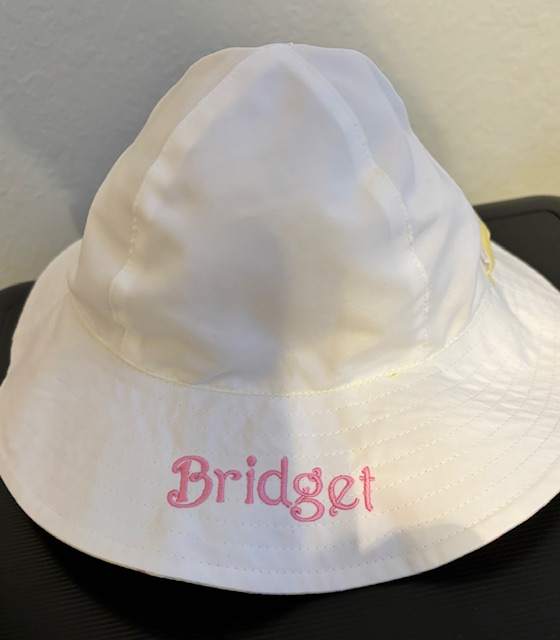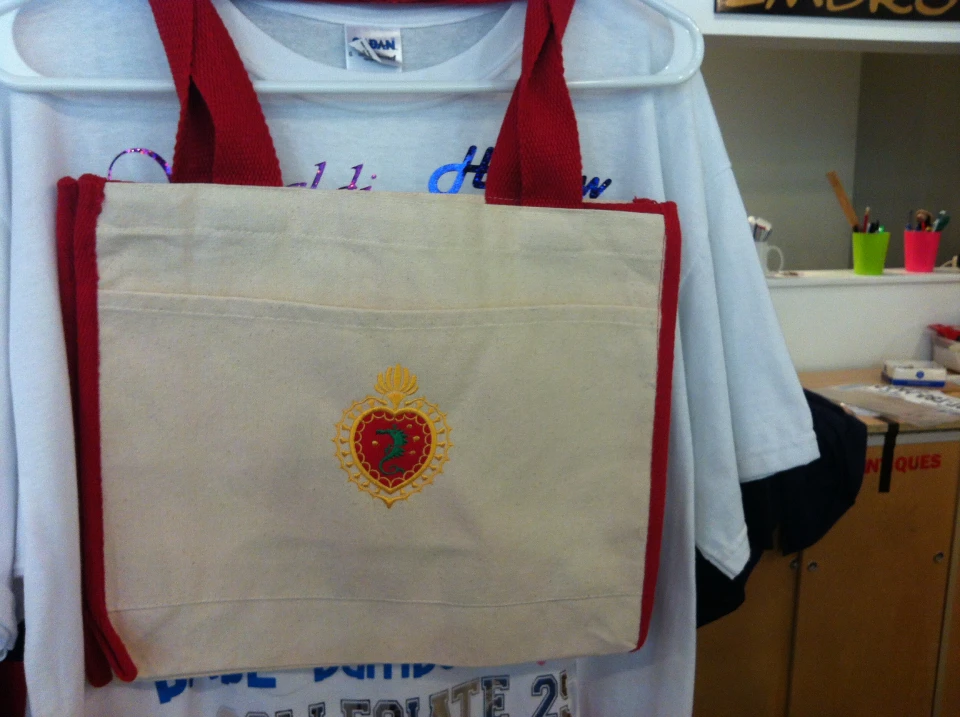Trendy Backpack Embroidery for Personalized and Distinct Styles
The Art of Custom Needlework: Opening the Secrets to Creating Special and Remarkable Designs
Embroidery, a craft soaked in practice and artistry, holds within its complex stitches the power to change fabric into a canvas of special expression. The keys to developing customized embroidery styles that astound the eye and leave a lasting perception depend on a fragile equilibrium of technique, imagination, and interest to information. As we explore the world of customized embroidery, we discover the nuanced interaction in between string selection, stitch complexity, and style customization that boosts a plain garment to a job of art. Join us on a journey through the art of custom embroidery as we decipher the secrets behind crafting genuinely remarkable and distinct productions.
Picking the Right Needlework Threads
When picking needlework threads, what essential factors should you take into consideration to make sure the very best results for your custom layouts? The selection of embroidery string is important in identifying the last end result of your embroidered design. Among the main considerations is the material of the thread. Various products such as cotton, polyester, rayon, and silk provide differing degrees of shine, sturdiness, and texture. It is necessary to pick a thread product that matches the textile you are stitching on and straightens with the desired appearance of the layout.
Thicker strings can add measurement and appearance to your layout, while finer strings are suitable for detailed information and small message. In addition, thinking about the color fastness and washability of the thread is important to make sure that your personalized layouts keep their top quality and vibrancy over time.
Discovering Various Stitch Strategies
To delve into the realm of 'Exploring Various Stitch Strategies', one must understand the ins and outs and subtleties that each sewing technique brings to the art of embroidery. Different stitch techniques not only add visual rate of interest but also add to the general structure and dimension of the design. One popular stitch technique is the satin stitch, which involves closely packed parallel stitches to create a smooth and glossy surface area, perfect for loading in shapes and creating vibrant lays out.
On the various other hand, the backstitch is a flexible technique often made use of for detailing and adding great details. It involves sewing backward to develop a solid line of needlework. Furthermore, the French knot stitch adds a responsive component to designs, excellent for creating distinctive accents like blossom centers or attractive touches.
Checking out various stitch methods permits embroiderers to play with light, darkness, and depth within their styles, elevating the aesthetic charm and artistic high quality of their embroidery tasks. By grasping various sewing approaches, one can unlock limitless opportunities for creating one-of-a-kind and unforgettable personalized needlework pieces.
Incorporating Personalized Design Aspects
Having actually discovered the details of different stitch techniques such as the satin stitch, backstitch, and French knot, the focus now moves in the direction of including tailored design elements in customized needlework jobs. Individualized layout components play an essential function in making embroidery jobs genuinely special and remarkable. One method to integrate customization is by including initials, names, or considerable days to the style. This not just adds an individualized touch yet additionally improves the nostalgic worth of the needlework item.
Another way to incorporate personalized design elements is by consisting of symbols or concepts that hold unique meaning to the recipient or reflect their rate of interests and personality. Integrating a favorite blossom, animal, or hobby-related sign can make the embroidery layout much more purposeful and customized. In addition, selecting colors that resonate with the recipient or straighten with the designated motif can additionally boost the personalization of the needlework project.
Understanding the Art of Color Control

One trick element of shade sychronisation is understanding shade theory. This includes recognizing how various colors interact with each various other, the emotions they share, and exactly how they can be combined to develop visually enticing designs. By using color concept principles, embroiderers can develop harmonious shade palettes that boost the overall appearance of the style.
In addition, taking notice of comparison is vital in color sychronisation. Utilizing contrasting colors can aid specific components of the style pop, boost legibility, and produce a visually vibrant needlework piece. By mastering the art of color control, embroiderers can raise their layouts and produce remarkable pieces that reverberate with clients and audiences alike.
Enhancing Appearance With Advanced Embroidery Stitches

French knots, as an example, are ideal for including tiny, increased dots to your layout, imitating sports teams names and numbers the appearance of grains or creating a distinctive surface. Bullion knots, on the other hand, can be made use of to create twisted, ropelike components that add a lavish feel to the needlework. Seed sewing involves small, scattered stitches that can complete areas with a multicolor appearance, while turkey work produces cosy, dimensional accents reminiscent of pet hair or foliage. Trying out these advanced embroidery stitches enables you to press the boundaries of standard needlework and develop really one-of-a-kind and visually enticing appearances in your designs.
Conclusion
In final thought, the art of custom needlework includes a mix of choosing the appropriate strings, exploring different stitch strategies, including tailored design elements, grasping color sychronisation, and improving texture with advanced stitches. By understanding and applying these crucial elements, embroiderers can produce distinct and memorable layouts that display their creativity and skill. Needlework lovers can unlock the keys to producing lovely and bespoke items that stick out and leave a long lasting impression.